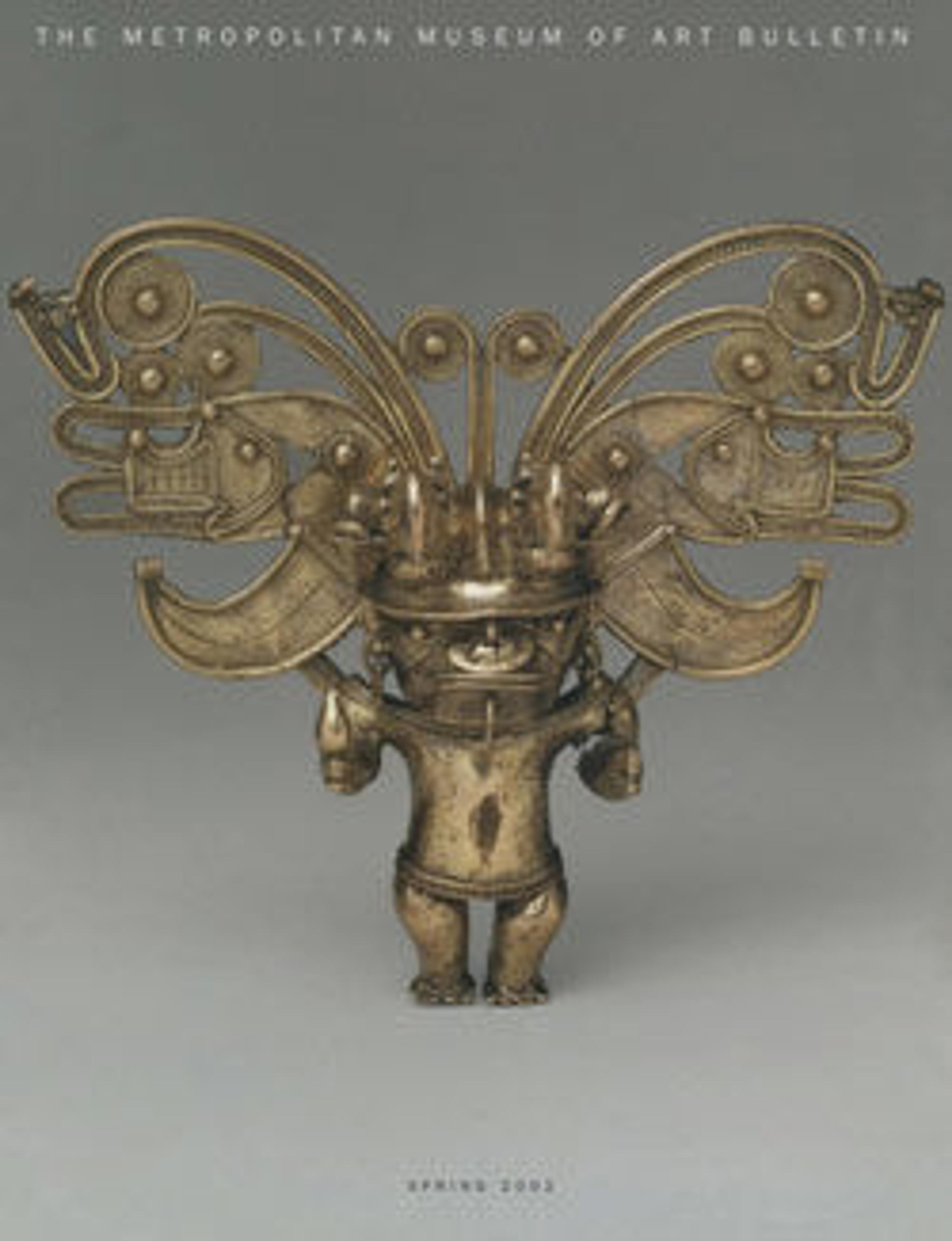Frog pendant
Frogs are frequently depicted in the goldwork of Costa Rica and Panama. In this tropical region numerous species abound, from tiny terrestrial varieties to giant tree frogs, some with poisonous skins and some vibrantly colored. A tree frog may be depicted here, with its long thin legs projecting from its body. Bifurcated tongues, a pervasive serpent symbol, emerge from either side of the mouth and are stylized as split scrolls. Chiriquí-style objects come from both sides of the Costa Rica–Panama border. This example is said to have come from Puerto González Víquez, located in the far south of Costa Rica.
Artwork Details
- Title:Frog pendant
- Artist:Chiriquí artist(s)
- Date:700–1550 CE
- Geography:Costa Rica
- Culture:Chiriquí
- Medium:Gold
- Dimensions:H. 4 1/8 × W. 4 × D. 1 in. (10.5 × 10.2 × 2.5 cm)
- Classification:Metal-Ornaments
- Credit Line:Jan Mitchell and Sons Collection, Gift of Jan Mitchell, 1991
- Object Number:1991.419.1
- Curatorial Department: The Michael C. Rockefeller Wing
More Artwork
Research Resources
The Met provides unparalleled resources for research and welcomes an international community of students and scholars. The Met's Open Access API is where creators and researchers can connect to the The Met collection. Open Access data and public domain images are available for unrestricted commercial and noncommercial use without permission or fee.
To request images under copyright and other restrictions, please use this Image Request form.
Feedback
We continue to research and examine historical and cultural context for objects in The Met collection. If you have comments or questions about this object record, please contact us using the form below. The Museum looks forward to receiving your comments.
